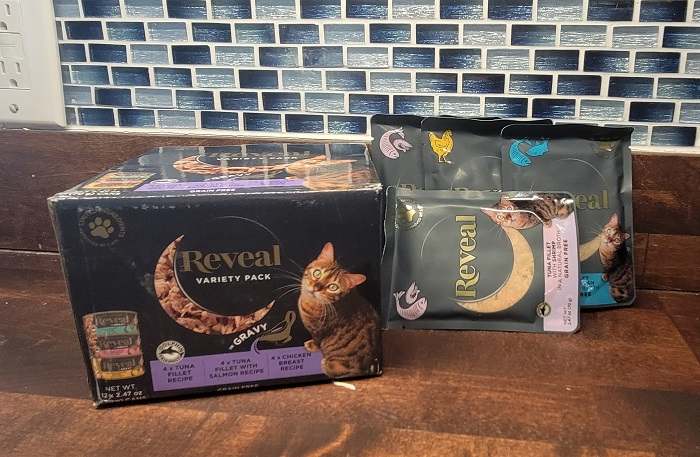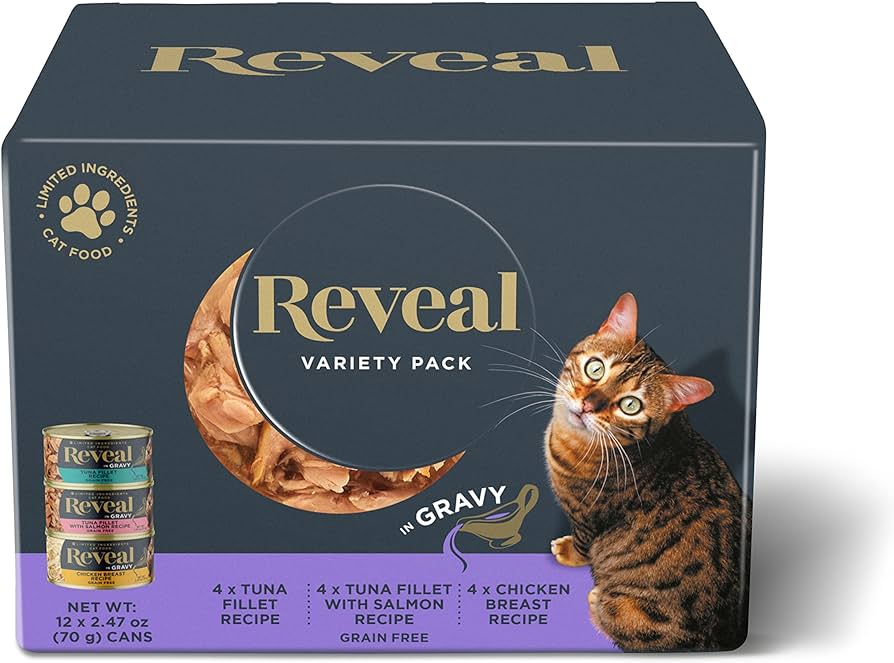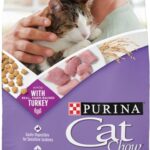Cats can eat crab in moderation as it is not toxic to them. Crab meat is a source of protein and omega-3 fatty acids which are beneficial to felines.
Crabs can be a healthy snack for cats when they are cooked plainly and served in small amounts. It’s crucial to avoid feeding cats any crab with added seasonings, salt, or butter which can be harmful to their health. Always remove the shell and any sharp pieces to prevent choking hazards or gastrointestinal issues.
Introduce crab into your cat’s diet slowly to check for any allergic reactions. Remember to consult with a veterinarian before making significant changes to your pet’s diet. Responsible pet owners should balance treats with complete and balanced nutrition to ensure their cats maintain optimal health.
Feline Seafood Safety Explained
As cat owners delve into the dietary preferences of their feline friends, seafood is often a topic of interest and concern. While the image of a cat happily munching on fish may seem natural, the question arises: Can cats eat crab? Just like human foods, not all seafood is created equal in the eyes of cat nutrition. Let’s explore the safety implications of feeding crab to cats and break down the nuances of their seafood consumption.
Understanding The Biological Dietary Needs Of Cats
Cats are obligate carnivores, which means their diet naturally leans heavily towards animal-based proteins. Cats require a range of nutrients that are generally found in meats, including taurine, arachidonic acid, and vitamin A, which they cannot synthesize in sufficient quantities on their own. While crab can be a source of lean protein, it’s crucial to align it with the nutritional balance your cat needs.
Identifying Risks Associated With Seafood For Felines
Seafood carries unique risks when incorporated into a cat’s diet. Here’s what cat owners should consider:
- Allergies: Some cats may develop allergies to seafood, including crab, leading to gastrointestinal upset or skin reactions.
- Heavy Metals and Toxins: Seafood, depending on its source, may contain mercury or other toxins that could be harmful to cats.
- Bones and Choking Hazards: Small bones in seafood can pose a choking risk or cause digestive tract obstructions.
- Nutritional Balance: Relying heavily on crab or other seafood can disrupt the nutritional balance, resulting in deficiencies or excesses of certain nutrients.
Necessary Precautions For Protecting Cat Health
Feeding your cat crab or other seafood requires certain precautions:
- Consult Your Vet: Before introducing new foods like crab into your cat’s diet, consult your veterinarian for personalized advice.
- Portion Control: Seafood should only be served as an occasional treat, not a staple in their diet.
- Proper Preparation: Ensure that any seafood offered is cooked thoroughly to eliminate harmful pathogens and remove all bones.
- Quality Source: Opt for high-quality, sustainably sourced seafood to minimize the presence of toxins and heavy metals.
- Monitor for Reactions: Watch your cat for any signs of adverse reactions after eating seafood and seek veterinary care if needed.
Can Cats Eat Crab? Nutritional Facts
As a caring pet owner, it’s crucial to explore the kinds of foods that can benefit your feline friend’s health and well-being. One such food is crab meat, often touted for its delectable taste and nutritious value. But how does crab meat stack up when considering a diet for your cat? Let’s delve into the nutritional facts and assess crab meat’s role in a feline diet.
The Nutritional Content Of Crab Meat For Cats
Cats are obligate carnivores, which means they require a diet high in proteins and certain amino acids that are found in meat. Crab meat is a good source of these essential nutrients, including:
- Protein – Crucial for muscle growth and repair.
- Omega-3 fatty acids – Known for reducing inflammation and supporting cognitive functions.
- Vitamins, such as vitamin B12 – Important for maintaining nerve health and aiding in digestion.
- Minerals like zinc and copper – Vital for a robust immune system and maintenance of healthy fur and skin.
Providing moderate amounts of crab meat can thus contribute positively to your cat’s diet.
How Crab Fits Into A Cat’s Balanced Diet
A balanced diet for a cat should predominantly consist of meat, as cats derive most of their nutritional needs from animal-based proteins. Crab meat can be an occasional treat that introduces variety while still maintaining a balanced diet. Nonetheless, it’s essential to ensure that crab is served in moderation, paired with a high-quality commercial cat food that meets all dietary requirements.
Consider the following points when introducing crab to your cat’s diet:
- Frequency: Introducing crab as a treat, not a staple food.
- Portion: Serving only small amounts to avoid digestive upset.
- Preparation: Offering cooked, unseasoned crab without any harmful additives.
Comparing Crab To Other Protein Sources For Cats
When comparing crab to other protein sources for cats, it’s vital to weigh the benefits and potential drawbacks.
| Protein Source | Benefits | Drawbacks |
|---|---|---|
| Crab | Rich in vitamins and minerals; omega-3 fatty acids | Can be expensive; potential for allergic reactions |
| Chicken | Highly digestible protein; cost-effective | Lacks the omega-3 content of seafood |
| Beef | Good protein content; palatability | Higher fat content than other meats |
In conclusion, while crab can be a nutritious and enjoyable treat for cats, it’s crucial to balance its intake with other protein sources that make up the cornerstone of their diet. By offering a variety of proteins, you enrich your cat’s diet, catering to their nutritional needs and taste preferences.
Scrutinizing The Crab For Cats
Pet parents often want to share their favorite foods with their furry companions, but it’s essential to examine whether these treats are safe for them. Cats can exhibit an intriguing curiosity towards seafood, including crab, which may be enticing due to its distinctive smell and taste. However, responsible cat ownership involves more than succumbing to those pleading eyes. In scrutinizing the crab for cats, we must delve into nutritional concerns and potential risks to ensure our feline friends can enjoy these sea delicacies without harm.
Potential Allergens And Toxic Substances In Crabs
Although crabs are heralded for their high protein and omega-3 fatty acids, certain aspects necessitate caution.
- Shell fragments: Can cause choking or gastrointestinal obstruction.
- Iodine: Present in crabs, could lead to allergic reactions in some cats.
- Seasonings and butter: Common crab accompaniments are not suitable for cats and may contain toxic ingredients such as onion or garlic powder.
Evaluation of these allergens and toxic substances is critical in the quest to maintain your cat’s health.
Cooked Vs. Raw Crab: What’s Safe For Cats?
When considering the preparation of crab for cats, the approach you take can affect your pet’s health.
| Cooked Crab | Raw Crab |
|---|---|
| Can be safe in moderation | Potential bacterial/parasitic threat |
| Ensure it’s plain with no added spices | May contain harmful pathogens |
| No risk of shell fragments if properly prepared | Not recommended for cats |
It’s clear that cooked crab has a safety advantage over its raw counterpart for feline consumption.
Common Signs Of Seafood Allergies In Felines
Identifying an allergy in cats can be tricky but observing the right signs can lead to a prompt response. Cats allergic to seafood may exhibit:
- Excessive scratching or grooming
- Swollen or itchy skin
- Gastrointestinal upset such as vomiting or diarrhea
- Respiratory issues
If your cat displays any of these symptoms after consuming crab, consulting a veterinarian is critical.

Credit: cats.com
Safe Crab Consumption Practices
Understanding safe crab consumption practices for cats is essential for pet owners who wish to indulge their feline friends with this seafood treat. While cats may show interest in crab, there are crucial considerations to ensure that this delicacy remains a pleasure rather than a health hazard. Let’s examine the specifics of serving size, preparation, and frequency to keep your cat both happy and healthy.
Recommended Portion Sizes For Feline Crab Consumption
Felines are known for their small stomachs and specific dietary requirements, so portion control is key when it comes to feeding them crab. A good rule of thumb is to offer:
- Adult Cats: 1 to 2 tablespoons of cooked crab meat per instance.
- Kittens: A small teaspoon as their digestive systems are still developing.
This helps prevent digestive issues and ensures moderation in their diet.
Preparation Techniques To Maintain Safety And Nutrition
The way crab is prepared can significantly affect its safety and nutritional value for felines. Following these steps can help:
- Cook thoroughly to kill any bacteria or parasites.
- Avoid seasonings and spices which can be harmful to cats.
- Ensure the crab is free of shells and bones to prevent choking or intestinal blockage.
- Steamed or boiled crab is preferable to canned options which may contain preservatives and added salt.
Safe Frequency Of Crab Treats In A Cat’s Diet
Crab should be considered an occasional treat rather than a dietary staple for cats. To maintain a balanced diet, regulate the frequency of crab treats to:
| Cat Type | Frequency Recommendation |
|---|---|
| Indoor Cats | Once a week at most |
| Outdoor Cats | Twice a month, considering their more varied diet |
Observing this frequency can help prevent nutritional imbalances while still treating your cat to the flavors they love.
Alternatives To Crab In Feline Diets
Exploring dietary alternatives for felines, particularly when it revolves around seafood, can improve not just the variety but also the safety of what ends up in your cat’s bowl. ‘Alternatives to Crab in Feline Diets’ offer a nutritious route to ensure that your whiskered friend enjoys the richness of seafood without potential health risks. Before introducing new foods to your cat, however, it’s essential to understand the nutritional balance cats need and the best ways to serve these new options.
Exploring Safer Seafood And Protein Options
While crab might be a tasty treat for cats, it’s vital to consider safer and possibly more nutritious seafood and protein selections. Introduce your feline to:
- Cooked Salmon – Rich in omega-3 fatty acids, offering great taste and health benefits.
- Tuna – Offer as a rare treat due to high levels of mercury.
- Cooked Shrimp – A small serving can be relished without the seasonings.
- Whitefish – Make sure it’s fully cooked and free of bones.
Turn to lean, cooked terrestrial proteins like chicken or turkey for a safer bet with fewer allergens as an option.
Balancing Variety With Dietary Needs
Your feline’s diet should be a precise balance of various nutrients. While variety is important, it should never come at the cost of their health. Foods incorporated should be:
| Consideration | Details |
|---|---|
| Protein Content | High-quality, easily digestible, and appropriate in amount. |
| Essential Amino Acids | Taurine is critical for cat health. |
| Fats | Healthy fats are required, but should be given in moderated amounts. |
| Vitamins and Minerals | Evaluate the need for vitamins A, E, and B-complex, and minerals like calcium. |
Transitioning From Traditional To Alternative Proteins
Changing from crab or other traditional proteins to alternative options should be a gradual process. Follow these steps:
- Mix a small amount of the new protein with the current one.
- Gradually increase the ratio based on your cat’s acceptance over days or weeks.
- Monitor your cat’s health and reactions to the new diet.
- Consult your veterinarian to ensure the new diet meets all the necessary nutritional needs.
Executing a slow transition prevents digestive upset and ensures your cat can adjust with ease.
Frequently Asked Questions On Can Cats Eat Crab
Is Crab Meat Safe For Cats To Eat?
Yes, crab meat is safe for cats in small amounts. It should be plain and cooked without any added seasonings or butter. Crab is a lean protein and can be a low-calorie treat.
Can Cats Be Allergic To Crab?
Some cats can develop allergies to seafood, including crab. Symptoms may include itching, swelling, or digestive upset. If you notice any signs of allergy, discontinue feeding crab and consult your vet.
How Often Can A Cat Eat Crab?
Cats can enjoy crab occasionally as a treat, not as a meal replacement. Once a week is a safe frequency to avoid any digestive issues or nutritional imbalances.
Does Crab Meat Provide Any Benefits For Cats?
Crab meat contains protein, omega-3 fatty acids, and minerals like zinc and copper that can support cat health. However, it should be given as a complement to a balanced cat diet.
Conclusion
To sum up, felines can safely enjoy crab as an occasional treat. Ensure it’s cooked and served plain, without any harmful additives. Moderation is key, and remember to consult your vet with any dietary concerns. Treating your cat to crab enriches their mealtime with a taste of the sea.






